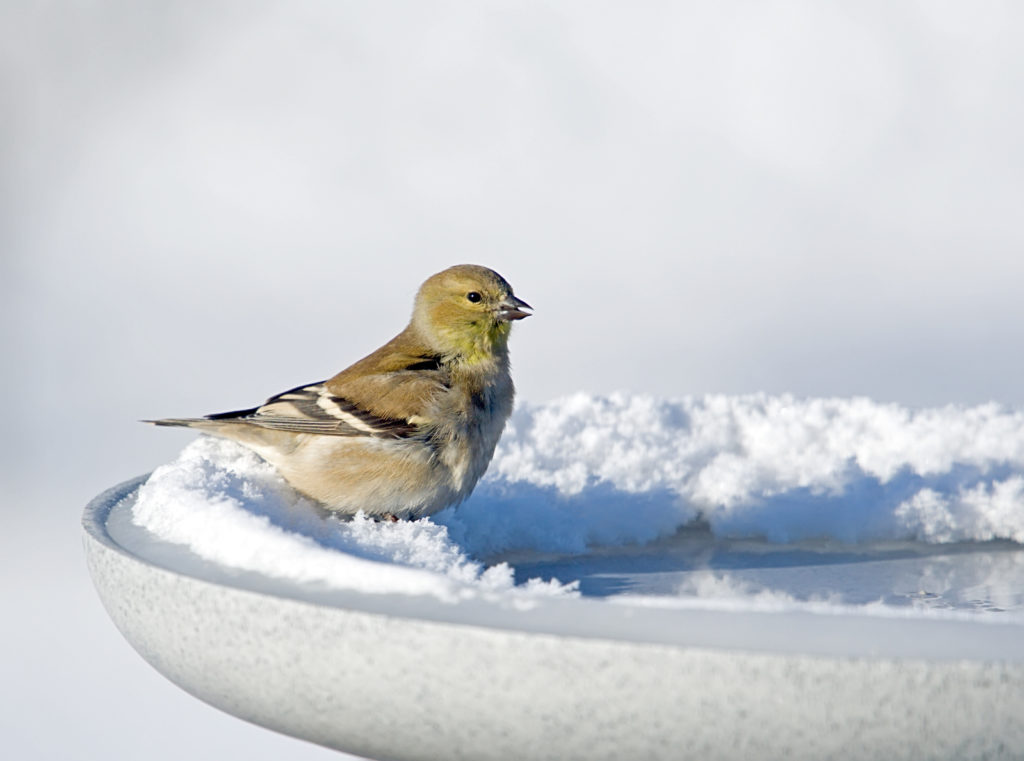
Goldfinches and many other birds appreciate a bird bath even in winter. (C) Al Mueller/Fotolia
Although I leave my bird feeders up year-round, some people only put them out for winter.
And like a lot of us, perhaps you’ve noticed some birds have turned up their beaks at Niger thistle, that expensive black seed, long the must-have for sparrows, chickadees, finches, siskins, nut hatches and other small birds.
Initially, I thought perhaps the thistle seed was stale, so I’d purchase new. Still the seed was barely touched.
John Schaust, chief naturalist at the Indianapolis-based Wild Birds Unlimited Inc., credits better selections in our landscapes. The more we plant native plants, such as coneflower (Echinacea purpurea), salvia, black-eyed Susan (Rudbeckia spp.) and viburnums, the less interest the birds have in bird feeder fodder.
Niger thistle has very little oil compared to sunflower, safflower and other seeds, he said.
Bird feeding is a $3 billion-plus industry, and I contribute my share. I have two feeders for sunflower, one for safflower, one for thistle, one each for peanuts (in shells and out), one for dried fruits and nuts, and two for suet. For the two finch feeders, I’ve switched to mixed finch food, which the birds seem to eat. I have four bird baths in summer and two in winter, which are heated. A water source is the best way to attract birds to your yard, regardless of whether you feed them.
There are all kinds of rules about where to put feeders, such as about 3 feet away from a window, and 10 feet from trees so squirrels and chipmunks can’t jump to get the food. There also are recommendations for baffles to keep squirrels, chipmunks and other wildlife from climbing the poles to get to the food. It actually takes an arsenal of several impediments to ensure birds get their due. Some of these are difficult to accomplish in many urban landscapes, and in suburban areas, deer regularly nibble at feeders. I just keep yelling “all things in moderation.”